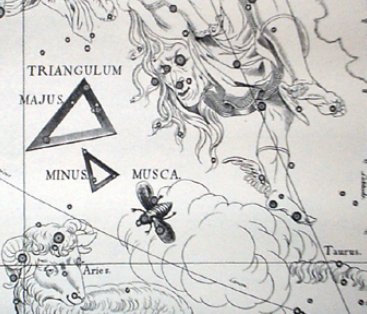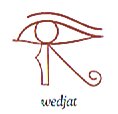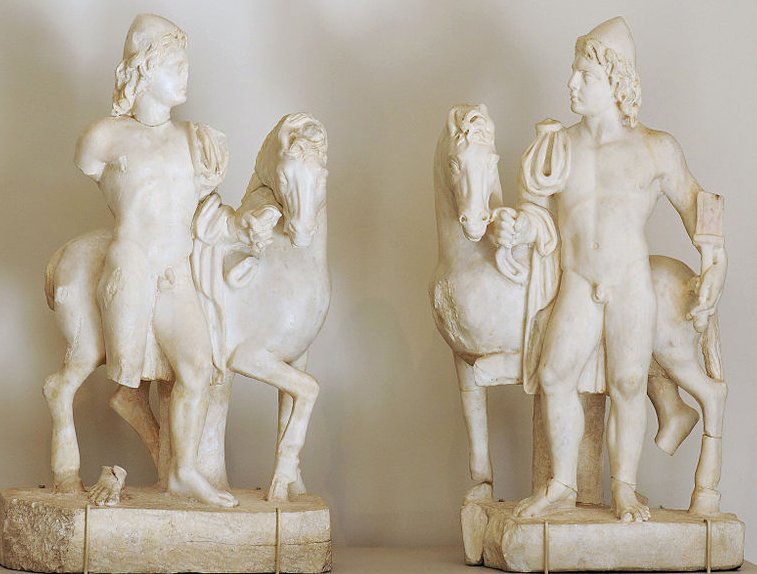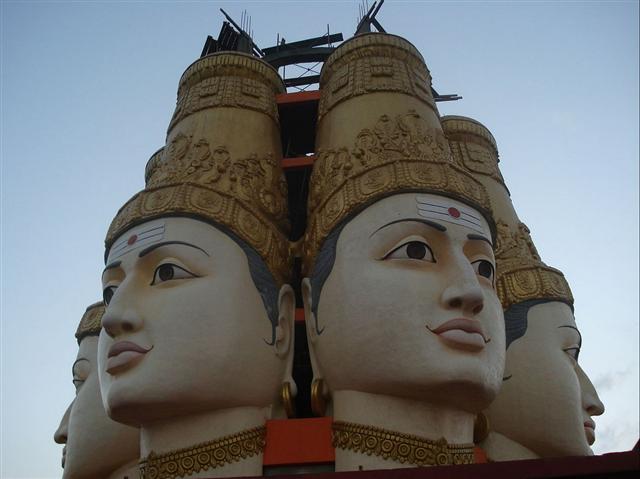If my planetary numbers and colours should be relevant for the dates, then we ought to look for instance at the time when Polaris rose with the Sun in FEBRUARY 11 (a day of Saturn):
However, by comparing with the corresponding dates at the time of rongorongo, at the time of Gregory XIII, and at the time of the First Point of Aries, only a confusing caleidoscopic blur appears to be the result. Instead these 5 glyphs should be better understood by consulting the Chorti indians: ... On February 9 the Chorti Ah K'in, 'diviners', begin the agricultural year. Both the 260-day cycle and the solar year are used in setting dates for religious and agricultural ceremonies, especially when those rituals fall at the same time in both calendars. The ceremony begins when the diviners go to a sacred spring where they choose five stones with the proper shape and color. These stones will mark the five positions of the sacred cosmogram created by the ritual. When the stones are brought back to the ceremonial house, two diviners start the ritual by placing the stones on a table in a careful pattern that reproduces the schematic of the universe. At the same time, helpers under the table replace last year's diagram with the new one. They believe that by placing the cosmic diagram under the base of God at the center of the world they demonstrate that God dominates the universe. The priests place the stones in a very particular order. First the stone that corresponds to the sun in the eastern, sunrise position of summer solstice is set down; then the stone corresponding to the western, sunset position of the same solstice. This is followed by stones representing the western, sunset position of the winter solstice, then its eastern, sunrise position. Together these four stones form a square. They sit at the four corners of the square just as we saw in the Creation story from the Classic period and in the Popol Vuh. Finally, the center stone is placed to form the ancient five-point sign modern researchers called the quincunx ...
Later on in this series of rituals, the Chorti go through a ceremony they call raising the sky. This ritual takes place at midnight on the twenty-fifth of April and continues each night until the rains arrive. In this ceremony two diviners and their wives sit on benches so that they occupy the corner positions of the cosmic square. They take their seats in the same order as the stones were placed, with the men on the eastern side and the women on the west. The ritual actions of sitting down and lifting upward are done with great precision and care, because they are directly related to the actions done by the gods at Creation. The people represent the gods of the four corners and the clouds that cover the earth. As they rise from their seats, they metaphorically lift the sky. If their lifting motion is uneven, the rains will be irregular and harmful ... (David Freidel, Linda Schele, Joy Parker, Maya Cosmos. Three Thousand Years on the Shaman's Path.) Shih Huang Ti was only 13 years old when he became emperor and his first act was to begin the construction of his burial chamber. But he lived on for a fairly long time and managed to conquer all the surrounding states. Therefore his burial place under a pyramid of earth had time to grow into a gigantic mausoleum. In ancient Egypt enormous pyramids were built only for the most powerful Pharaohs. The pattern was 4 corners at the bottom and 1 corner up towards the sky in the center.
... This illustration is from Ronald Wright, Cut Stones and Crossroads. A Journey in the Two Worlds of Peru. The 'pontificial world' (Pontifical Mundo) has Peru at the top and Spain at bottom, in both cases with the central edifices occupying the place of the Sun. Wright explains: [This is] Waman Puma's conception of the relationship between Peru and Spain according to the Andean duality principle of Hanan (Upper) and Hurin (Lower). Each country is shown as a Tawantinsuyu - four quarters with a capital in the center. Peru is higher, closer to the sun, and therefore full of gold, the 'sweat of the sun'. In Wikipedia one can read: '... Guaman Poma appeared as a plaintiff in a series of lawsuits from the late 1590s, in which he attempted to recover land and political title in the Chupas valley that he believed to be his by family right. These suits ultimately proved disastrous for him; not only did he lose the suits, but in 1600 he was stripped of all his property and forced into exile from the towns which he had once ruled as a noble ...' The fact that FEBRUARY 9 (day 40 from JANUARY 1) evidently was in use as day February 9 (40) by the Chorti, suggests precession had changed nothing. It was not a date to be derived from the stars but from the Sun. 181 (June 30) - February 9 (40) = 141 (░May 21):
I have here also added the dates at the time of Bharani, 41 precessional days earlier than at the time of rongorongo. 145 (May 25) - 41 = 104 ("April 14) = 8 * 13. In the Hindu structure the Bharani lunar station (the asterism Musca Borealis) represented the (Child) Bearer:
4-14 ("April 14) suggests Ga1-1 was at the first day beyond night number 14 * 29Ż = 413. We can compare with 145 (May 25) = 290 / 2 and with 118 ('April 28) = 472 / 4 (where 52 * 5 = 260 = 20 * 13 and 42 * 8 = 336 = 24 * 14.) At the time of rongorongo the position of the star Bharani (41 Arietis) was at the Sun in May 1 (121 = 11 * 11) and this was 64 (= 8 * 8) days earlier than July 4 (185). Bharani rose heliacally at Gb8-8 (where 8 * 8 = 64). At the opposite side of the sky was Libra:
In the Dendera round zodiac (Egypt, ca 50 B.C.) we can see the little Sun child (Horus) resting on the beam of Libra while sucking his thumb and at the other side of the sky, where we would expect to find Musca Borealis, there is a Wedjat Sun eye:
... The eye is the symbolic site of subjection. Valeri observes that: 'The two sentiments that permit the transcendence of the self are, according to Hawaiians, desire and respect. One and the other are called kau ka maka, literally, 'to set one's eyes on' ... 'To see' (ike) in Hawaiian (as in French or English) is 'to understand', but it is also 'to know sexually'. Witness to the order, the world of forms generated by the chief, the eye, is the sacrifice of those who violate that order. The left eye of the slain tabu-transgressors is swallowed by Kahoali'i, ceremonial double of the king and living god of his sacrificial rites. Like the sun, chiefs of the highest tabus - those who are called 'gods', 'fire', 'heat', and 'raging blazes' - cannot be gazed directly upon without injury. The lowly commoner prostrates before them face to the ground, the position assumed by victims on the platforms of human sacrifice. Such a one is called makawela, 'burnt eyes' ... (Marshall Sahlins, Islands of History.) ... In ancient Egypt a right wedjat eye meant Sun and a left one meant Moon. Modern man relies heavily on his right eye, so let us therefore take a quick look at the world from the other side, to use our inherent faculty of 'perceiving in depth':
Inside (in the dark of) the great circle at top center are 2 + 1 'persons. The last of them has turned around, a sign of 'end' or 'old age'. Below this great black 'cycle' are 2 Moon crescents tightly bound together. Probably it means 2 * 29Ż = 59, because it is necessary to add 2 consecutive lunar months in order to reach a countable (natural) number. The Moon wedjat is riding in a kind of ship, which of course is necessary for travelling across the 'watery' domain on the 'back side' of the world ... Notably the Hindu structure has females at the beginning, not only Bharani but also the preceding 'wife of the ashvins' and the following 'nurses of Kārttikeya' (the jumping one). ... The arrival of the beginning of the sacrificial year might be determined by the Nakshatra method - observation of the spring full moon near to the autumn Nakshatra in Virgo. More commonly, however, it was determined as in the Greek system, by direct observation of the heliacal rising of a sign star. In the current calendar, for example - one unchanged since the fifth century A.D. - the yoga star of the Nakshatra Ashvini (beta Arietis) ushers in the spring equinox at its heliacal rising ... ... β and γ constituted the 27th 'nakshatra' Ašvini, the Ashwins, or Horsemen, the earlier dual Ašvināu and Ašvayujāu, the Two Horsemen, corresponding to the Gemini of Rome, but figured as a Horse's Head ... α sometimes was added to this lunar station, but β always was the junction star with the adjoining Bharani. About 400 years before our era this superseded Krittika as the leader of the 'nakshatras' ...
... The star cluster Krittika ... sometimes known as Kārtikā, corresponds to the open star cluster Pleiades in Indian astronomy and Jyotisa (Hindu astrology). The name literally translates to 'the cutters' ... ... In Hindu mythology, the god Murugan (Skanda/Subrahmanya/Kartikeya) was raised by the six sisters known as the Krttikā and thus came to be known as Kārtikeya (literally 'Him of the Krttikā'). According to the Mahābhārata, Murugan was born to Agni and Svāhā, after the latter impersonated six of the seven wives of the Saptarsi and made love to him. The Saptarshi, hearing of this incident and doubting their wives' chastity, divorced them. These wives then became the Krttikā ...
... Skanda (literally 'the jumping one' or 'the hopping one') is the planet Mars, also called Kartikeya, inasmuch as he was borne by the Krittika, the Pleiades. Mbh. 9.44-46 (Roy trans. vol. 7, pp. 130-43). It should be emphasized, aloud and strongly, that in Babylonian astronomy Mars is the only planetary representative of the Pleiades. See P. F. G÷ssmann. Planetarium Babylonicum (1950), p. 279: 'In der Planetenvertretung kommt fŘr die Plejaden nur Mars in Frage.' The Mahabharata insists on six as the number of the Pleiades as well as of the mothers of Skanda and gives a very broad and wild description of the birth and the installation of Kartikeya 'by the assembled gods ... as their generalissimo', which is shattering, somehow, driving home how little one understands as yet. The least which can be said, assuredly: Mars was 'installed' during a more or less close conjunction of all planets; in Mbh. 9.45 (p. 133) it is stressed that the powerful gods assembled 'all poured water upon Skanda, even as the gods had poured water on the head of Varuna, the lord of waters, for investing him with dominion'. And this 'investiture' took place at the beginning of the Krita Yuga, the Golden Age ...
|
||||||||||||||||||||||||||||||||||||||||||||||||||||||||||||||||||||||||||||||||||||||||||||||||||||||||||||||||||||||||||||||||||||||||||||||||||||||||||||||||||||||||||||||||||||||||||||||||||||||||||||||||||||||||||||||||||||||||||||||||||||||||||||||||||||||||||||

















